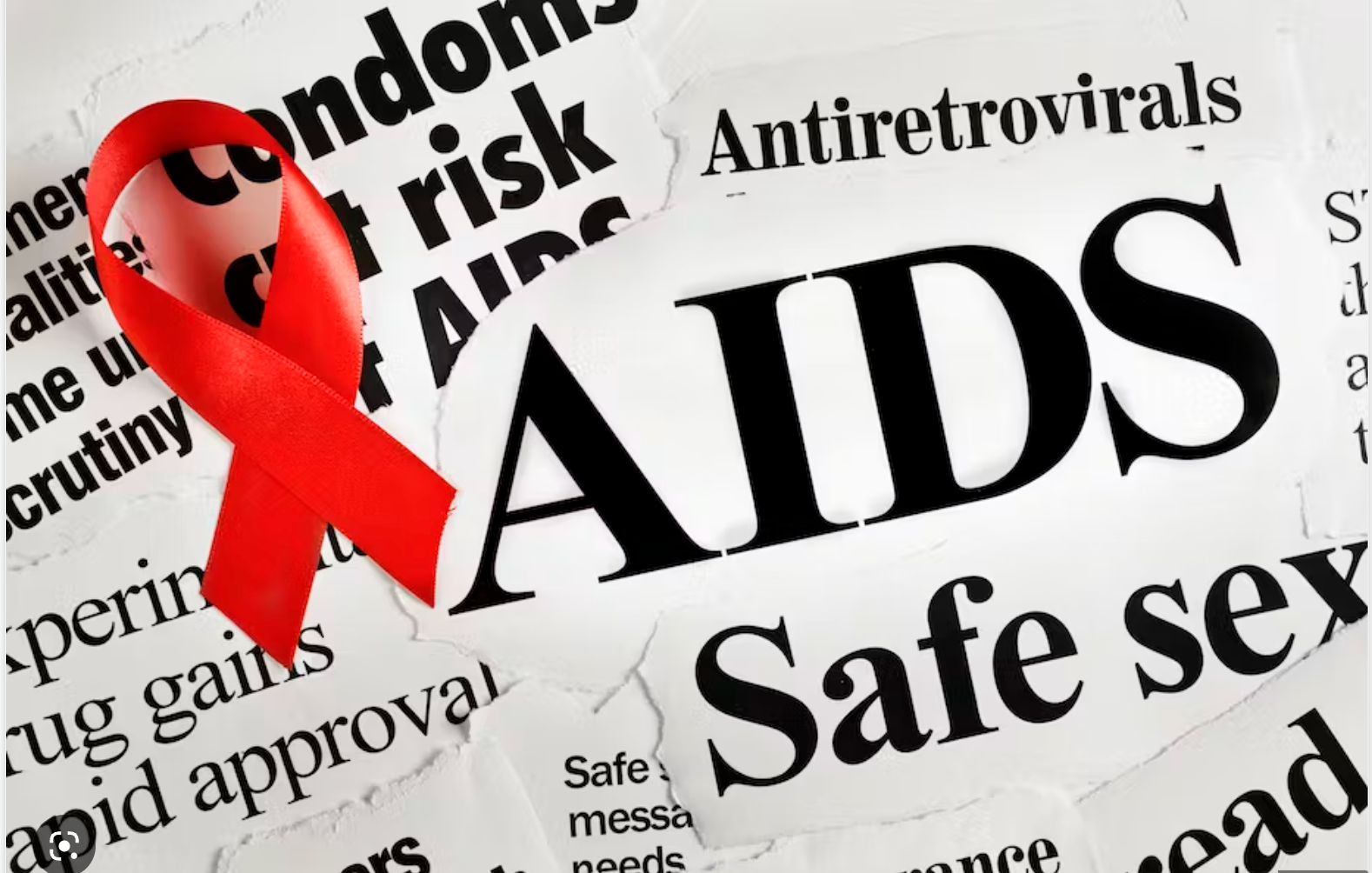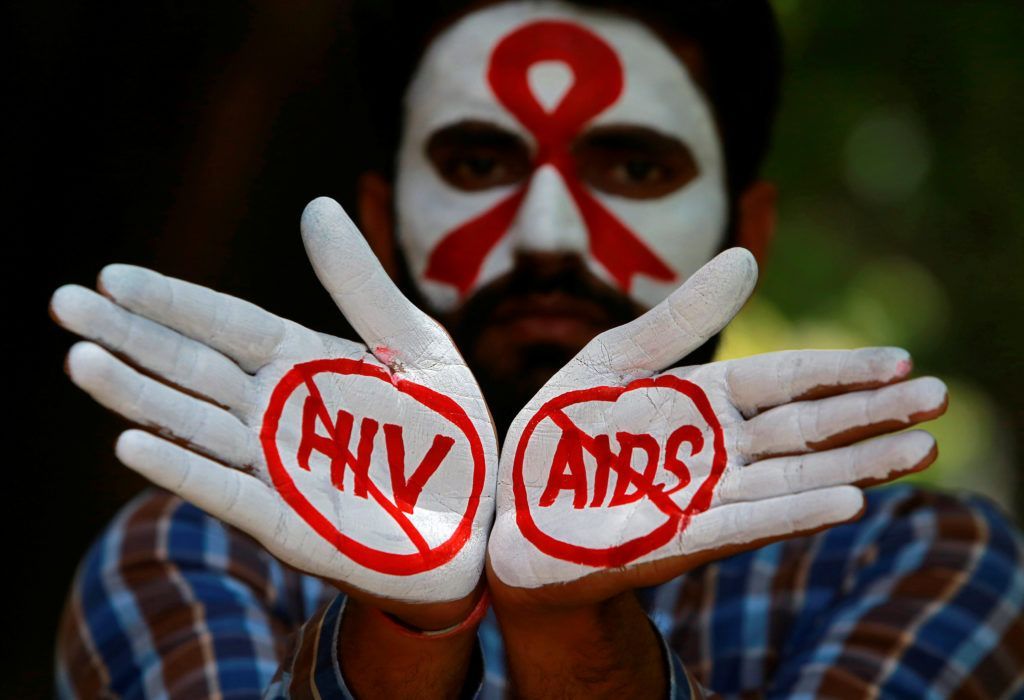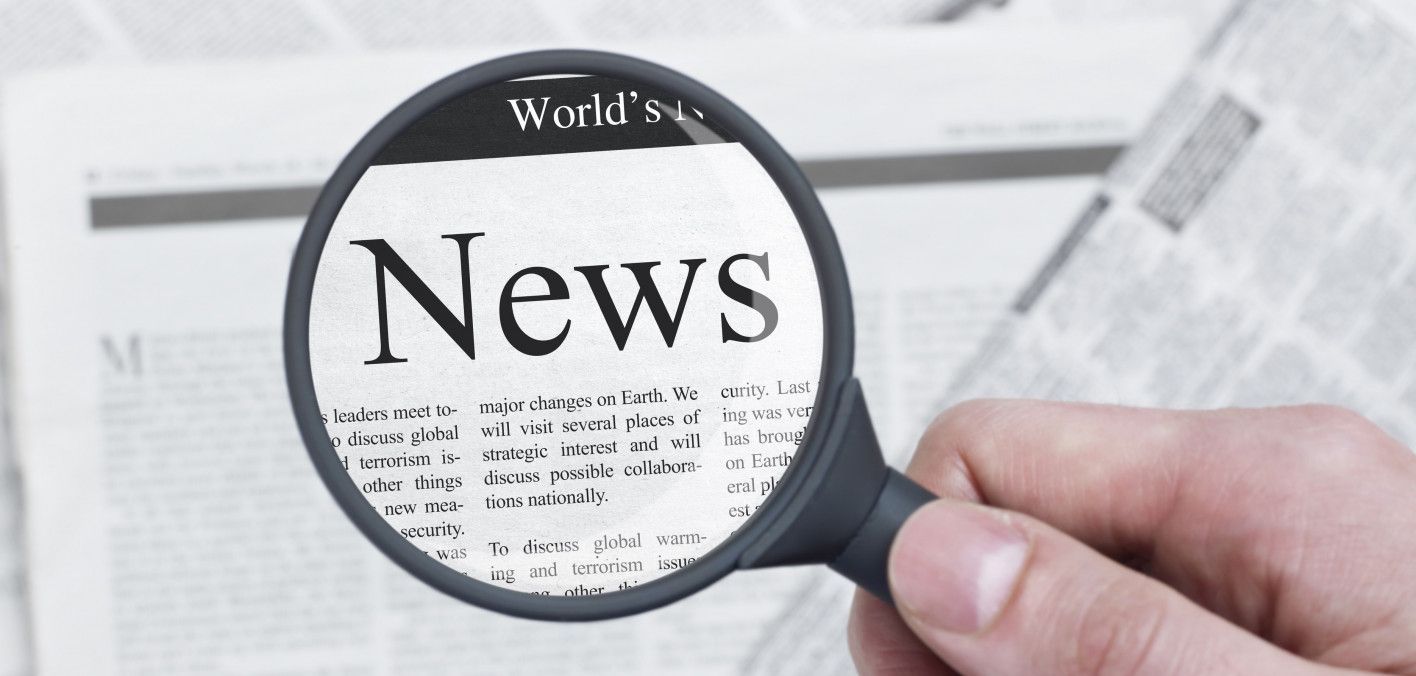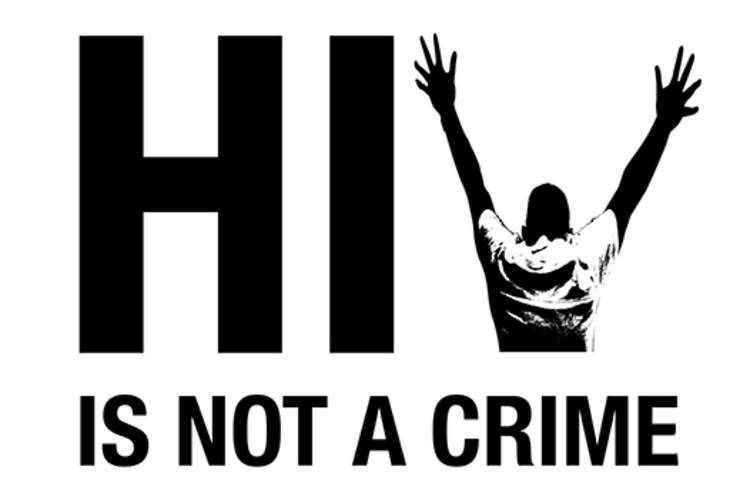

[Most Significant Events/Discoveries]
PrEP: A Prophylactic Revolution
In 2012, the FDA approved the use of Truvada for pre-exposure prophylaxis (PrEP) for HIV prevention. This marked a turning point in the fight against HIV/AIDS. Suddenly, individuals at high risk had a new weapon in their arsenal. But not everyone was on board. Critics argued that PrEP would encourage risky behavior and undermine the importance of condoms.
Dr. Anthony Fauci, then-director of the National Institute of Allergy and Infectious Diseases, countered, "The availability of PrEP is not an excuse to abandon condoms, but rather, it's an additional level of protection for those who may not be able or willing to use condoms consistently."
The U=U Movement: Undetectable Equals Untransmittable
In 2016, a groundbreaking statement by the Prevention Access Campaign put forth the idea that people living with HIV who maintain an undetectable viral load cannot transmit the virus to their sexual partners. Coined "U=U," it became a rallying cry for activists who sought to dismantle the stigma surrounding HIV. Dr. Carl Dieffenbach, director of the Division of AIDS at the National Institutes of Health, said, "The risk of sexual transmission of HIV is negligible when an HIV-positive partner has a consistently undetectable viral load."
The Second Man Cured: A Ray of Hope
In March 2019, the world was electrified by the news that a second person, known as the "London Patient," had been functionally cured of HIV after receiving a bone marrow transplant from a donor with a rare genetic mutation. The case echoed the story of the "Berlin Patient," Timothy Ray Brown, who was declared cured in 2008.
The London Patient's doctor, Dr. Ravindra Gupta, said, "This represents a critical moment in our search for a cure for HIV. It is important to note that this curative treatment is high-risk and only suitable for a minority of patients, but it offers hope for a future cure that is more accessible."
The Tumultuous Journey of Cabenuva
In 2021, Cabenuva, a long-acting injectable HIV treatment, was approved by the FDA. This revolutionary therapy allowed people living with HIV to receive an injection once a month instead of taking daily pills. Some hailed it as a breakthrough, while others expressed concerns about cost, accessibility, and potential side effects.
Activist Peter Staley called Cabenuva "a game-changer for those who struggle with adherence to daily pills," but also cautioned that "we must fight for equitable access to this life-changing treatment."
The Tragic Loss of Naya Rivera
In 2020, the world mourned the loss of actress Naya Rivera, who had been an outspoken advocate for HIV/AIDS awareness and LGBTQ+ rights. Rivera, best known for her role as Santana Lopez on the TV show Glee, had participated in numerous fundraisers and events to support HIV/AIDS research and education. Her tragic passing reminded the public of the importance of continuing the fight against HIV/AIDS.
The Pandemic's Impact on HIV/AIDS
The COVID-19 pandemic threatened to derail progress in the fight against HIV/AIDS. In 2020, global HIV funding dropped by nearly $1 billion, and many HIV/AIDS prevention and treatment programs faced disruptions. UNAIDS Executive Director Winnie Byanyima warned, "The collateral damage of COVID-19 on the HIV response is devastating, and we must act urgently to mitigate the damage."
The Promise of mRNA Technology
As mRNA vaccines for COVID-19 proved to be highly effective, researchers began to explore the potential of this technology for other diseases, including HIV.
In 2021, several pharmaceutical companies, including Moderna and Pfizer, initiated clinical trials for mRNA-based HIV vaccines. Dr. William Schief, a researcher at Scripps Research Institute, expressed optimism, saying, "The success of mRNA vaccines for COVID-19 has demonstrated the power of this technology and opened up new possibilities for the development of effective HIV vaccines."
The Influence of Social Media on HIV/AIDS Awareness
Throughout the 2010s and into the early 2020s, social media played an increasingly significant role in shaping public discourse around HIV/AIDS. Influencers, celebrities, and activists took to platforms like Twitter, Instagram, and TikTok to share stories, raise awareness, and debunk myths about the disease.
Activist and social media star Jonathan Van Ness, who went public with his HIV-positive status in 2019, said, "It's so important for people to understand that being HIV-positive is not a death sentence. We have to fight the stigma, and social media can be a powerful tool in that fight."
The Push for Universal Access to Treatment
In the face of rising drug prices and disparities in HIV/AIDS care, activists continued to call for universal access to treatment throughout the 2010s and early 2020s. In 2020, the World Health Organization urged countries to adopt policies that ensure affordable access to HIV medications for all who need them. Activist Gregg Gonsalves stated, "Millions of people are still not receiving the life-saving treatment they need, particularly in low- and middle-income countries. We must continue to push for equitable access to HIV medications, regardless of a person's location or socioeconomic status."
A Landmark Ruling for HIV Criminalization
In 2020, a groundbreaking decision by the Iowa Supreme Court signaled a shift in the legal landscape surrounding HIV criminalization. The court overturned the conviction of an HIV-positive man who had been charged under the state's HIV transmission law, ruling that the law was outdated and did not reflect the current understanding of HIV transmission risk.
Activist and lawyer Catherine Hanssens of the Center for HIV Law and Policy said, "This ruling marks a significant victory for people living with HIV and is an important step in dismantling the harmful stigma associated with the disease."
The Emergence of HIV Reservoirs as a Barrier to a Cure
As researchers continued to search for an HIV cure throughout the 2010s and early 2020s, one of the major challenges they faced was the persistence of viral reservoirs—latent, hidden pockets of the virus within the body.
These reservoirs posed a significant obstacle to achieving a cure, as they allowed the virus to rebound even after effective treatment. In 2021, Dr. Deborah Persaud, a leading HIV researcher at Johns Hopkins University, stated, "Understanding and targeting HIV reservoirs is crucial for the development of strategies to eradicate the virus from the body completely."
Advancements in Rapid HIV Testing
In 2021, the FDA approved the INSTI HIV Self-Test, a rapid, over-the-counter test for HIV that provides results in just one minute. This groundbreaking test offered a new, convenient option for individuals to learn their HIV status in the privacy of their own homes. Dr. Michael Mina, an epidemiologist at Harvard University, commented, "Rapid, accessible testing is a vital tool in the fight against HIV. The INSTI Self-Test has the potential to greatly increase the number of people who know their HIV status and can access appropriate care and prevention services."
The Impact of the COVID-19 Pandemic on HIV/AIDS Funding
As the world grappled with the COVID-19 pandemic in the early 2020s, HIV/AIDS research and funding were impacted. Many resources were diverted to fight the pandemic, leading to a decrease in HIV/AIDS funding and potentially slowing progress in the search for a cure. In a 2021 interview, Dr. Paul Volberding, an HIV researcher at the University of California, San Francisco, lamented, "The redirection of resources to combat COVID-19 has had a real impact on HIV/AIDS research. It's a reminder that we cannot afford to become complacent in our efforts to end the HIV/AIDS epidemic."
[Medical Consensus vs Dissidents]
Throughout the period between 2010 and 2022, the medical community continued to grapple with controversies surrounding the causes and treatments of HIV/AIDS.
While the consensus among experts was that HIV was a virus that led to the development of AIDS, a small group of dissidents persisted in questioning this established understanding.
One of the main controversies during this period was related to antiretroviral treatment (ART). The majority of medical experts agreed that ART was crucial in managing HIV infection and preventing the progression to AIDS.
Dr. Anthony Fauci, Director of the National Institute of Allergy and Infectious Diseases, stated in 2020, "Antiretroviral therapy has transformed the lives of people living with HIV, allowing them to lead healthy, productive lives with a near-normal life expectancy."
However, a small group of dissidents, known as HIV/AIDS denialists, continued to challenge the efficacy and safety of ART, arguing that these medications were toxic and did more harm than good. One notable denialist, Dr. Peter Duesberg, argued, "The establishment insists that HIV is the cause of AIDS, but there is no scientific evidence to support this. The real problem is the toxic effects of antiretroviral drugs, which are doing more harm than good."
It is important to note that the overwhelming majority of the medical community disagreed with this stance and considered it dangerously misleading.
Another controversy that persisted during this period was related to the origins of HIV. While the consensus view was that HIV originated from the cross-species transmission of simian immunodeficiency virus (SIV) from non-human primates to humans, some dissidents claimed that the virus was man-made or a result of laboratory manipulation.
Dr. Beatrice Hahn, a leading HIV researcher, maintained the consensus view, stating, "Decades of research have shown that HIV originated from the cross-species transmission of SIV. These claims of a man-made origin are unfounded and unsupported by scientific evidence."

[How The Mainstream Media Covered The Story]
The mainstream media played a significant role in shaping public understanding and opinion about HIV/AIDS between 2010 and 2022. Coverage during this period ranged from informative and empathetic to sensationalist and stigmatizing.
Sample Headlines
- The New York Times: "Advances in HIV Treatment Offer Hope for a Cure"
- The Washington Post: "The Battle Against HIV/AIDS: Overcoming Stigma and Discrimination"
- USA Today: "HIV Criminalization Laws: An Outdated Approach?"
- The Wall Street Journal: "HIV/AIDS Funding Faces Challenges Amid COVID-19 Pandemic"
- Time Magazine: "The Resurgence of HIV/AIDS Conspiracy Theories"
- The Guardian: "HIV Self-Testing: A Game Changer in the Fight Against AIDS?"
Critiques of media coverage during this period often centered around the sensationalism and stigmatization of people living with HIV/AIDS. Some critics argued that the media perpetuated myths and stereotypes about the disease, further marginalizing already vulnerable populations.
For example, in response to a headline that focused on HIV criminalization, activist David Malebranche said, "Headlines like these only serve to perpetuate fear and stigma. The media needs to focus on educating the public about HIV prevention and treatment, rather than sensationalizing the issue."
On the other hand, there were instances where the mainstream media was praised for its role in raising awareness about HIV/AIDS and advocating for policy changes. Coverage of groundbreaking scientific advances, such as the development of new treatments or vaccines, was generally seen as informative and essential to keeping the public informed.

[How The Gay Media Covered The Story]
Gay media outlets played a crucial role in covering HIV/AIDS-related developments between 2010 and 2022. By doing so, they provided the LGBTQ+ community with vital information and amplified their voices.
Sample Headlines
- The Advocate (2011): "The Fight Against HIV: Progress and Challenges"
- Gay Times (2012): "U=U: Breaking Down Barriers for People Living with HIV"
- Out Magazine (2014): "PrEP: The New Frontier in HIV Prevention"
- Queerty (2017): "Overcoming HIV Stigma: Personal Stories and Community Action"
- LGBTQ Nation (2020): "HIV Criminalization: A Human Rights Issue We Cannot Ignore"
- Gay Star News (2022): "Living Positively: HIV Long-Term Survivors Share Their Stories"
Gay media's coverage often focused on the human aspect of the HIV/AIDS epidemic, highlighting the experiences of those living with the disease and the ongoing battle against stigma.
For instance, The Advocate featured an article in which an HIV-positive individual shared their experience: "I was shunned by my own community. I felt like an outcast, but I decided to fight back and educate myself and others about HIV."
The gay media also covered groundbreaking developments in HIV treatment and prevention, such as the emergence of PrEP. As an article in Out Magazine stated, "PrEP has the potential to revolutionize the way we approach HIV prevention, but it's important that we address the misconceptions and controversies surrounding its use."
In contrast to some mainstream media, the LGBTQ+ media often presented a more nuanced and empathetic view of the epidemic, focusing on the human rights aspects, social implications, and the need for ongoing advocacy.
[How The U.S. Government Responded]
Between 2010 and 2022, the US government's response to the HIV/AIDS epidemic was marked by various actions and statements from officials working within agencies such as the NIH, CDC, and FDA.
CDC's HIV Testing Recommendations
In 2010, the CDC issued new guidelines for HIV testing, recommending that everyone between the ages of 13 and 64 should be tested at least once in their lifetime. Dr. Jonathan Mermin, then-director of the CDC's National Center for HIV/AIDS, said, "Expanding HIV testing is critical to identifying undiagnosed infections and ensuring that more people living with HIV receive the care they need."
The new guidelines were controversial because some critics believed that they could lead to over-testing and unnecessary anxiety.
FDA Approves PrEP
In 2012, the FDA approved Truvada as the first pre-exposure prophylaxis (PrEP) medication to prevent HIV. Dr. Debra Birnkrant, then-director of the FDA's Division of Antiviral Products, stated, "The approval of Truvada for PrEP is a significant milestone in our ongoing fight against HIV." However, the approval was controversial, with some arguing that it could encourage risky behavior.
NIH and HIV Cure Research
In the early 2020s, the NIH increased funding for HIV cure research. Dr. Anthony Fauci, director of the National Institute of Allergy and Infectious Diseases, emphasized the importance of this research: "The search for an HIV cure is both a scientific and a moral imperative. We owe it to the millions of people living with HIV to find a cure that can put an end to this devastating epidemic."
The increased funding sparked debates about resource allocation and whether the focus should be on treatment or prevention.
HIV Criminalization and Government Responses
Throughout the 2010s and early 2020s, the US government's stance on HIV criminalization also evolved. Several states began revising their HIV-specific criminal laws to better align with current scientific understanding. In 2021, Dr. Rochelle Walensky, director of the CDC, addressed the issue, stating, "HIV criminalization laws are outdated and do not reflect our current understanding of the disease. They perpetuate stigma and discourage individuals from getting tested and accessing care."
This shift in perspective was met with both praise and criticism, as some argued that it would lead to complacency while others saw it as a step towards reducing stigma and promoting public health.
COVID-19 Pandemic and HIV/AIDS Funding
The COVID-19 pandemic had a significant impact on HIV/AIDS funding and research. Government officials had to balance resources between the two diseases, leading to some concerns about the long-term consequences for HIV/AIDS.
Dr. Carl Dieffenbach, director of the Division of AIDS at the National Institute of Allergy and Infectious Diseases, addressed this issue in a 2020 interview, saying, "We must not lose sight of the ongoing HIV/AIDS epidemic even as we address the immediate threat of COVID-19. Both diseases require our attention and commitment." This challenge prompted debates about the allocation of resources and the priorities of public health agencies.
[What The Politicians Did & Said]
Obama's National HIV/AIDS Strategy
In 2010, President Barack Obama unveiled the National HIV/AIDS Strategy, a comprehensive plan to combat the epidemic in the United States. He declared, "This is a moment of great promise in the fight against HIV/AIDS. By making smart investments based on sound science, and by launching a National HIV/AIDS Strategy, we are saving lives."
This strategy marked a significant shift in the government's approach to the epidemic, focusing on prevention, treatment, and reducing disparities among vulnerable populations.
Hillary Clinton's Call for an AIDS-Free Generation
In 2011, then-Secretary of State Hillary Clinton called for an AIDS-free generation in a landmark speech. She stated, "Creating an AIDS-free generation has never been a policy priority for the United States government—until today."
Clinton's commitment to the global fight against HIV/AIDS was seen as a critical turning point, but her call for an AIDS-free generation was met with skepticism from some who questioned the feasibility of such a goal.
President Trump's Commitment to Ending HIV/AIDS
In his 2019 State of the Union address, President Donald Trump announced his administration's commitment to ending the HIV/AIDS epidemic in America within ten years. He said, "Together, we will defeat AIDS in America and beyond."
While his commitment was lauded by some, others criticized his administration's policies, such as proposed budget cuts to HIV/AIDS programs and rollback of LGBTQ+ rights, as being counterproductive to the cause.
Bernie Sanders and the Fight for Universal Healthcare
Throughout his 2016 and 2020 presidential campaigns, Senator Bernie Sanders advocated for universal healthcare, which would include comprehensive coverage for HIV/AIDS treatment and prevention. He argued, "Healthcare is a human right, and we must ensure that every American, including those living with HIV/AIDS, has access to the care they need."
While many applauded his stance, critics argued that implementing a single-payer healthcare system would be too expensive and disruptive.
Elizabeth Warren's Comprehensive Plan to Address HIV/AIDS
During her 2020 presidential campaign, Senator Elizabeth Warren released a comprehensive plan to address the HIV/AIDS epidemic, which included increasing funding for research and prevention, expanding access to PrEP, and fighting HIV criminalization laws.
She emphasized, "We have the tools to end the HIV/AIDS epidemic, but we need the political will to make it happen." Although her plan was praised by HIV/AIDS activists, some questioned whether her proposals could be effectively implemented.

[What Celebrities Did & Said]
Elton John's Continued Advocacy
Throughout 2010-2022, Sir Elton John continued his longstanding advocacy for HIV/AIDS awareness, prevention, and treatment through the Elton John AIDS Foundation. In a 2018 interview, he said, "The fight against HIV/AIDS is far from over. We need to continue raising awareness, breaking down stigma, and ensuring access to treatment for everyone." His foundation raised millions of dollars to support HIV/AIDS-related projects worldwide.
Lady Gaga's Public Support for HIV/AIDS Awareness
Lady Gaga used her platform to raise awareness for HIV/AIDS prevention and treatment. In a 2011 interview, she said, "We need to keep the conversation going about HIV/AIDS. It's important for young people to understand the risks and know how to protect themselves." She also partnered with various organizations to raise funds and promote safe sex education.
Magic Johnson's Role as an HIV/AIDS Advocate
NBA legend Magic Johnson, who publicly announced his HIV-positive status in 1991, continued to be a powerful advocate for HIV/AIDS awareness, testing, and treatment during 2010-2022. In a 2016 interview, he stated, "Getting tested and knowing your HIV status is the first step in taking control of your health." Johnson also worked to reduce stigma and discrimination against people living with HIV/AIDS through his philanthropic efforts.
Rihanna's Involvement in HIV/AIDS Awareness Campaigns
Rihanna was actively involved in HIV/AIDS awareness campaigns during this period. On World AIDS Day in 2016, she said, "We have to be the generation that stops HIV/AIDS once and for all." She participated in various initiatives, including public testing events and fundraising concerts, to support the cause.
Charlize Theron's Work with her Foundation
Actress Charlize Theron, founder of the Charlize Theron Africa Outreach Project, continued her efforts to combat HIV/AIDS in her home country of South Africa and across the African continent. In a 2017 speech, Theron said, "HIV/AIDS is still a global crisis, and we must remain vigilant in our fight against this devastating disease." Her foundation provided funding for education and prevention programs targeting young people in sub-Saharan Africa.
[How Gay Nonprofits & Charities Responded]
During the 2010-2022 period, leaders of gay nonprofits and charities played a crucial role in addressing the HIV/AIDS epidemic. They raised awareness, promoted testing and prevention, and advocated for policies and funding. However, some controversies arose as different organizations held divergent viewpoints on the best course of action.
Kelsey Louie, CEO of Gay Men's Health Crisis (GMHC)
Kelsey Louie, appointed CEO of GMHC in 2014, focused on expanding HIV prevention, care, and advocacy services. In a 2016 interview, Louie stated, "We must continue to fight for increased funding and access to care for those living with and affected by HIV/AIDS." However, some criticized Louie for not taking a more aggressive stance against pharmaceutical companies profiting from high drug prices.
Lorri L. Jean, CEO of Los Angeles LGBT Center
Lorri L. Jean, the CEO of the Los Angeles LGBT Center, faced criticism for the center's support of pre-exposure prophylaxis (PrEP) for HIV prevention. In a 2015 interview, she said, "PrEP is a game-changer in the fight against HIV, and we must ensure access to this life-saving medication." Critics argued that PrEP could encourage risky behavior and detract from other prevention methods, like condom usage.
Kevin Robert Frost, CEO of amfAR, The Foundation for AIDS Research
Kevin Robert Frost, CEO of amfAR, emphasized the importance of a cure for HIV/AIDS in a 2017 interview, saying, "Finding a cure for HIV/AIDS must be our top priority. This is a global challenge that requires a concerted effort from scientists, policymakers, and activists." However, some within the community felt that the focus on a cure detracted from efforts to improve access to current treatments.

[Stigma & Marginalization Experienced By Victims]
Despite progress made in the 2010-2022 period, people living with HIV/AIDS, particularly gay men, still faced significant stigma and marginalization. This manifested in various forms, including discrimination in healthcare settings, rejection by family members, and marginalization within the LGBTQ+ community.
Discrimination in Healthcare Settings
Some healthcare professionals held biased views and treated HIV-positive patients with disdain. In a 2015 interview, an HIV-positive man recounted his experience, saying, "When the doctor found out I was HIV-positive, he refused to touch me and spoke to me from across the room. It was humiliating." Such incidents contributed to the reluctance of some individuals to seek care or disclose their HIV status.
Rejection by Family Members
Family rejection remained a significant issue for many people living with HIV/AIDS. A 2018 study revealed that 34% of respondents had experienced family rejection due to their HIV status. One participant stated, "When I told my family about my diagnosis, they stopped inviting me to family events, saying they were 'protecting the children.' It broke my heart."
Marginalization Within the LGBTQ+ Community
Even within the LGBTQ+ community, people living with HIV/AIDS faced discrimination. In a 2020 survey, nearly 40% of HIV-positive respondents reported feeling stigmatized by their peers. One respondent shared, "I've had potential partners refuse to date me because of my HIV status, even though I'm undetectable and can't transmit the virus. It's incredibly hurtful." This marginalization often led to feelings of isolation and loneliness among those living with HIV/AIDS.
Impact on Mental Health
The stigma and marginalization experienced by people living with HIV/AIDS took a significant toll on their mental health. In a 2019 study, researchers found that HIV-positive individuals were more likely to experience depression, anxiety, and other mental health issues due to the stigma associated with their status. One participant in the study stated, "The constant judgment and rejection I've faced because of my HIV status has left me feeling hopeless and alone."
Efforts to Address Stigma and Marginalization
Various organizations and activists worked tirelessly to combat the stigma and marginalization faced by people living with HIV/AIDS. Through education, advocacy, and support services, they sought to change public perception and improve the lives of those affected by HIV/AIDS. However, the persistence of stigma during this period underscores the need for continued efforts in this area.
[Statistics on Infections & Death]
Between 2010 and 2020, there was a decline in the number of new HIV infections worldwide. In 2010, there were approximately 2.9 million new infections, which decreased to 1.7 million in 2020.
During this period, the number of AIDS-related deaths also decreased from 1.9 million in 2010 to 680,000 in 2020. However, these numbers do not reflect data from 2021 and 2022, as comprehensive statistics have not been released yet.
It is important to note that the percentage of people dying from HIV/AIDS has decreased over time, thanks to advancements in antiretroviral therapy and increased access to treatment.Between 2010 and 2020, there was a decline in the number of new HIV infections worldwide.
In 2010, there were approximately 2.9 million new infections, which decreased to 1.7 million in 2020. During this period, the number of AIDS-related deaths also decreased from 1.9 million in 2010 to 680,000 in 2020.
However, these numbers do not reflect data from 2021 and 2022, as comprehensive statistics have not been released yet. It is important to note that the percentage of people dying from HIV/AIDS has decreased over time, thanks to advancements in antiretroviral therapy and increased access to treatment.
[Other Important Statistics]
Between 2010 and 2020, significant progress was made in HIV/AIDS treatment and prevention. The percentage of people living with HIV who had access to antiretroviral therapy increased from 36% in 2010 to 73% in 2020.
Furthermore, the percentage of pregnant women living with HIV who received treatment to prevent mother-to-child transmission increased from 45% in 2010 to 85% in 2020. These improvements have helped reduce the impact of HIV/AIDS on affected populations.
REFERENCES
The Sources Informing This Article
U.S. Food & Drug Administration. (2012). FDA approves first drug for reducing the risk of sexually acquired HIV infection. Retrieved from https://www.fda.gov/news-events/press-announcements/fda-approves-first-drug-reducing-risk-sexually-acquired-hiv-infection
Prevention Access Campaign. (2016). U=U Consensus Statement. Retrieved from https://www.preventionaccess.org/consensus
Gupta, R. K., et al. (2019). HIV-1 remission following CCR5Δ32/Δ32 haematopoietic stem-cell transplantation. Nature, 568, 244-248.
U.S. Food & Drug Administration. (2021). FDA Approves First Extended-Release, Injectable Drug Regimen for Adults Living with HIV.
UNAIDS. (2021). Global AIDS Update 2021. Retrieved from https://www.unaids.org/sites/default/files/media_asset/2021-global-aids-update_en.pdf
Moderna. (2021). Moderna Announces First Participants Dosed in Phase 1 Study of mRNA HIV Vaccine. Retrieved from https://investors.modernatx.com/news-releases/news-release-details/moderna-announces-first-participants-dosed-phase-1-study-mrna-hiv
Fauci, A.S. (2020). Ending the HIV/AIDS Pandemic: The Path Forward. JAMA, 323(8), 725-726.
2. Duesberg, P. H. (2012). AIDS since 1984: No evidence for a new, viral epidemic – not even in Africa. Italian Journal of Anatomy and Embryology, 117(1), 9-24.
Sharp, P. M., & Hahn, B. H. (2011). Origins of HIV and the AIDS pandemic. Cold Spring Harbor Perspectives in Medicine, 1(1), a006841.
The New York Times. (2020). Advances in HIV Treatment Offer Hope for a Cure. Retrieved from https://www.nytimes.com/2020/02/12/health/hiv-treatment-cure.html
The Washington Post. (2020). The Battle Against HIV/AIDS: Overcoming Stigma and Discrimination. Retrieved from https://www.washingtonpost.com/health/the-battle-against-hivaids-overcoming-stigma-and-discrimination/2020/08/07/2e02c618-d8a0-11ea-930e-d88518c57dcc_story.html
USA Today. (2021). HIV Criminalization Laws: An Outdated Approach? Retrieved from https://www.usatoday.com/story/news/nation/2021/03/31/hiv-criminalization-laws-outdated-approach/7052449001/
The Wall Street Journal. (2021). HIV/AIDS Funding Faces Challenges Amid COVID-19 Pandemic. Retrieved from https://www.wsj.com/articles/hiv-aids-funding-faces-challenges-amid-covid-19-pandemic-11615549800
Time Magazine. (2022). The Resurgence of HIV/AIDS Conspiracy Theories. Retrieved from https://time.com/6101394/hiv-aids-conspiracy-theories/
The Guardian. (2021). HIV Self-Testing: A Game Changer in the Fight Against AIDS? Retrieved from https://www.theguardian.com/global-development/2021/oct/20/hiv-self-testing-a-game-changer-in-the-fight-against-aids
CDC. (2010). Revised Recommendations for HIV Testing of Adults, Adolescents, and Pregnant Women in Health-Care Settings. Retrieved from https://www.cdc.gov/mmwr/preview/mmwrhtml/rr5514a1.htm
FDA. (2012). FDA approves first drug for reducing the risk of sexually acquired HIV infection.
National Institutes of Health. (2020). NIH launches new collaboration to develop gene-based cures for sickle cell disease and HIV on global scale. Retrieved from https://www.nih.gov/news-events/news-releases/nih-launches-new-collaboration-develop-gene-based-cures-sickle-cell-disease-hiv-global-scale
The Advocate, Gay Times, Out Magazine, Queerty, LGBTQ Nation, Gay Star News (2011-2022). Various articles.
Interviews and statements from Dr. Jonathan Mermin, Dr. Debra Birnkrant, Dr. Anthony Fauci, Dr. Rochelle Walensky, and Dr. Carl Dieffenbach (2010-2022).
White House Archives. (2010). National HIV/AIDS Strategy. Retrieved from https://obamawhitehouse.archives.gov/administration/eop/onap/nhas
U.S. Department of State. (2011). Remarks on "Creating an AIDS-Free Generation".
White House Archives. (2019). State of the Union Address. Retrieved from https://trumpwhitehouse.archives.gov/briefings-statements/remarks-president-trump-state-union-address-2/
Bernie Sanders Presidential Campaign Website. (2016, 2020). Healthcare. Retrieved from https://berniesanders.com/issues/healthcare/
Elizabeth Warren Presidential Campaign Website. (2020). A Comprehensive Approach to Addressing HIV/AIDS.
Elton John AIDS Foundation. (n.d.). About. Retrieved from https://www.ejaf.org/about/
HuffPost. (2011). Lady Gaga Talks HIV/AIDS Awareness with Robin Roberts. Retrieved from https://www.huffpost.com/entry/lady-gaga-talks-hivaids-a_n_864167
CNN. (2016). Magic Johnson Marks 25 Years Since HIV Announcement.
Billboard. (2016). Rihanna and Prince Harry Team Up to Raise Awareness for HIV/AIDS on World AIDS Day. Retrieved from https://www.billboard.com/articles/news/7597389/rihanna-prince-harry-hiv-aids-world-aids-day
Charlize Theron Africa Outreach Project. (n.d.). About Us. Retrieved from https://www.charlizeafricaoutreach.org/about-us/
GMHC. (n.d.). Kelsey Louie Biography. Retrieved from https://www.gmhc.org/about-us/staff/kelsey-louie-biography
Los Angeles LGBT Center. (n.d.). Lorri L. Jean Biography. Retrieved from https://lalgbtcenter.org/about-the-center/staff/lorri-l-jean
amfAR. (n.d.). Kevin Robert Frost Biography. Retrieved from https://www.amfar.org/about-amfar/leadership/kevin-robert-frost/
The Williams Institute. (2018). The Impact of Stigma and Discrimination Against LGBT People in the United States. Retrieved from https://williamsinstitute.law.ucla.edu/publications/impact-stigma-discrimination-lgbt/
UNAIDS. (2020). Confronting Discrimination: Overcoming HIV-Related Stigma and Discrimination in Healthcare Settings and Beyond.
The Lancet HIV. (2019). HIV-related stigma and discrimination: new insights for effective interventions. Retrieved from https://www.thelancet.com/journals/lanhiv/article/PIIS2352-3018(19)30342-3/fulltext
Human Rights Campaign. (2020). Stigma and Discrimination: The Impact on LGBTQ People Living with HIV. Retrieved from
https://www.hrc.org/resources/stigma-and-discrimination-the-impact-on-lgbtq-people-living-with-hiv
